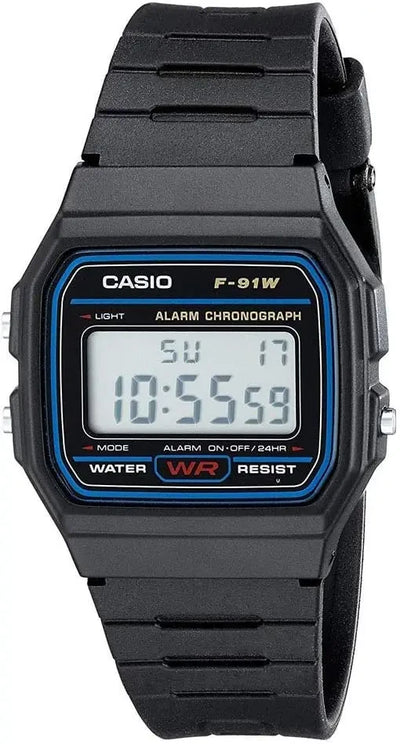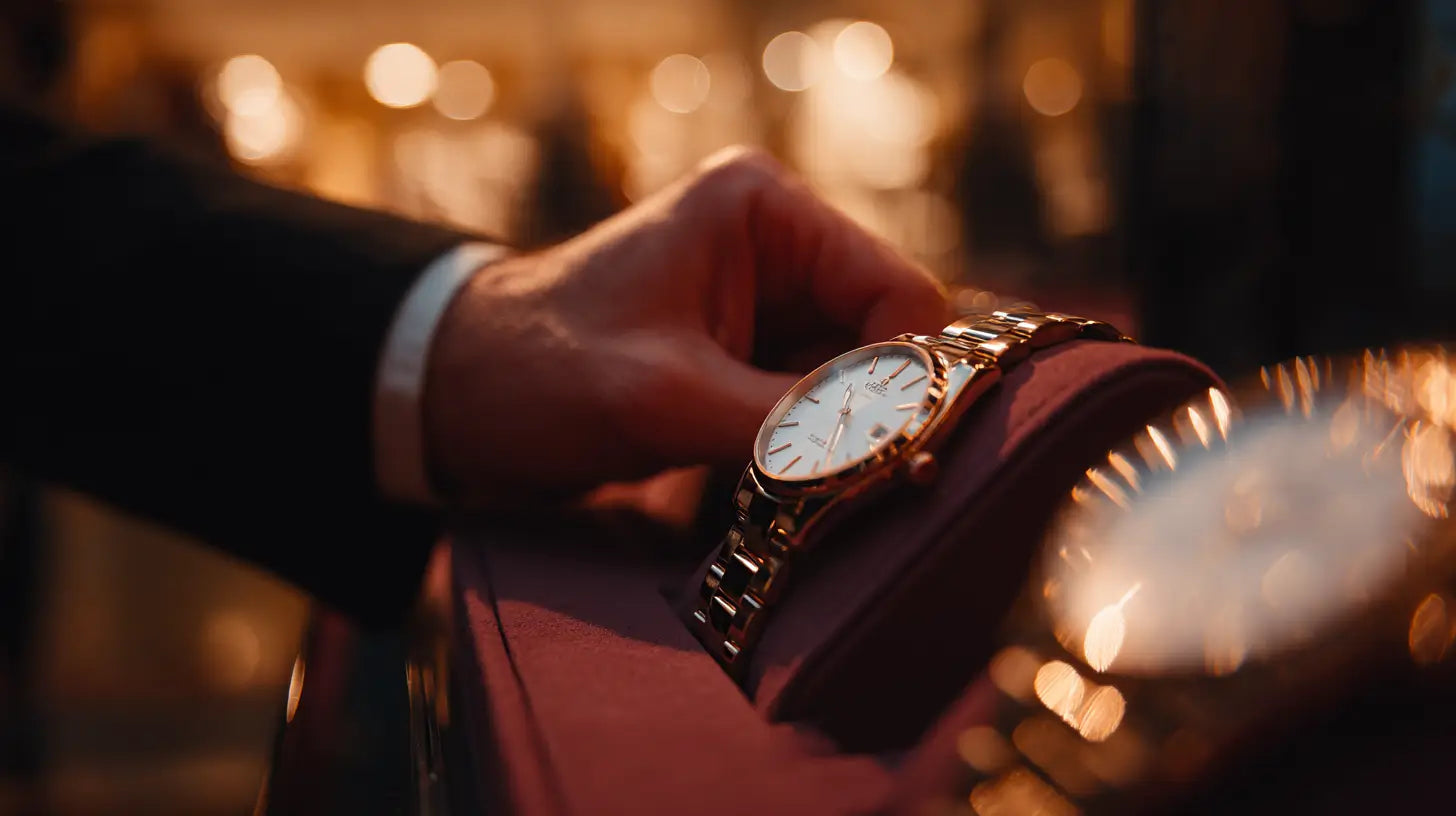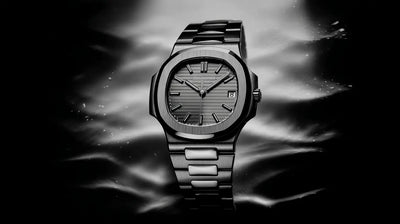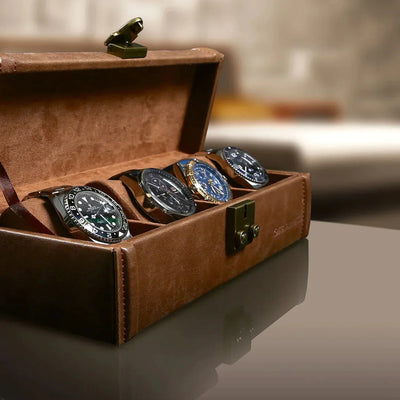
What is the best-selling watch in the world?
Which watch is the best-selling in the world among all the brands and models available on the market? We will explore...


Article: How to choose your first automatic watch?

There are objects that we wear, and others that we inhabit.
The automatic watch belongs to this second category. It doesn't just measure time: it embodies its trace, its weight, its elegance. It lives at your pace. It accompanies you in ordinary moments as well as in decisive meetings. Choosing your first automatic watch is like entering a discreet and demanding club—that of lovers of living mechanics. But how can you avoid making a mistake? What are the criteria to consider for a first purchase that is as symbolic as it is practical?
Before going into details, a reminder is in order: an automatic watch is a mechanical model that winds itself using the movements of the wrist.
No battery, no electronics. Just a rotor, gears, and a heart that beats to your rhythm. Every time you move, you bring the object to life.
Is it more accurate than a quartz model? No. Is it more reliable than a smartwatch? Not really. But that's beside the point.
An automatic watch is a discreet manifesto: it says you love beautiful things that last, objects that tell a story. And above all, it connects you to time, not as a counter, but as an experience.

Are you more of a three-piece suit or jeans and leather jacket person?
Your watch should complement your aesthetic, not contradict it. Dress models (elegant and slim) complement formal attire. Diver watches (sportier, often with a rotating bezel) add a masculine, adventurous touch. Minimalist watches, on the other hand, transcend eras with understated elegance.
The right watch is the one you want to wear every morning, not the one you save for special occasions.
Don't fall into the trap of oversized watches—unless you have a strong wrist.
Between 36 and 40 mm, we remain within harmonious proportions for most body types. Models beyond 42 mm are often aimed at larger wrists, or those who like a strong visual presence.
A good indicator: the watch should not hang over the wrist or float like a bracelet.
Beneath the dial lies the engine. For a first automatic watch, two major schools of thought compete for the stage:
Japanese movements (Seiko, Miyota, NH35) are robust, affordable and reliable.
The Swiss (ETA, Sellita, Powermatic) embody the watchmaking heritage, with a more advanced finish, often at a higher price.
To start without compromise, Japanese calibers offer a price-performance ratio that is hard to beat.
Good news: it's entirely possible to treat yourself to an automatic watch for between €200 and €500.
Brands like Orient, Seiko, Tissot, Citizen, and Fossil offer attractive, well-built pieces, often with a transparent caseback to admire the movement.
There's no rush to aim for Rolex or Omega. These are steps, not a starting point.
An automatic watch is not an item to be forgotten in a drawer.
It loves to be worn. And when it's resting, it's best to store it in a winder to keep the mechanism moving. A service every 3 to 5 years is recommended.
Avoid shock, excessive humidity, and keep it away from magnetic fields.
A little care, and it will last you for decades.

To avoid unpleasant surprises and counterfeits, it is better to turn to recognized brands.
Montres and Co , for example, offers a wide and careful selection, including the best Japanese and Swiss brands, at all price points.
With nearly 40 physical stores in France, reliable customer service and Click & Collect options, it is a reference for those who want to buy their first watch in a reassuring environment.
The site also offers a loyalty program, free returns within 30 days, and frequent promotions on iconic models.
Ideal for getting started without stress.
An automatic watch doesn't just follow you: it accompanies you, listens to you, reflects you.
It's not perfect, and that's precisely what makes it endearing. Its ticking, sometimes discreet, sometimes assertive, is a reminder that time is precious—and that it deserves to be celebrated in ways other than through a screen.
Wearing your first automatic is perhaps a small, silent revolution. A rediscovered elegance. A promise that time, precisely, is not lived in seconds, but in details.

Which watch is the best-selling in the world among all the brands and models available on the market? We will explore...

It leaves no trace. No scratches, no dents. Nothing visible. And yet, magnetism is one of the quietest enemies of your automatic watch. ...

The world of watch boxes offers a multitude of options to meet various needs and preferences. From a simple storage box to...
Leave a comment
This site is protected by hCaptcha and the hCaptcha Privacy Policy and Terms of Service apply.